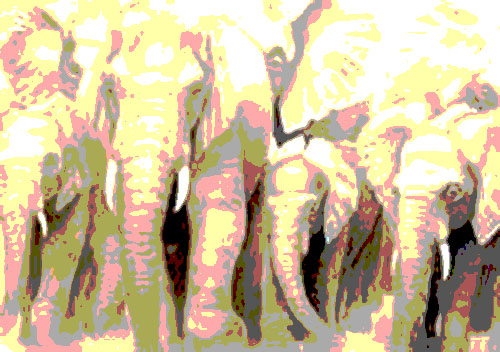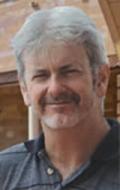
Journalism educators allowed Twitter to dictate the agenda of their annual conference in Sydney in November when they screened a live Tweet feed of the bulk of proceedings.
The experiment certainly showcased the potential power of this new social medium when the editor-in-chief of The Australian threatened defamation action over a conferenceTweet.
Chris Mitchell took umbrage at University of Canberra academic Julie Posetti’s live Twitter reportage of comments about him by a former staffer at the Oz. The Media section of The Australian offered one perspective of the spat while the Twitterverse offered another under the #twitdef hashtag.
While this episode was the most publicised outcome of the Journalism Education Association of Australia’s Twitter feed of its UTS conference, it was by no means the only example of social media discomfort over the three day talkfest.
The live feed started well before the event under the hashtag #jeaa2010, and when this edition of the PANPA Bulletin went to press the full transcript of all Tweets using that tag could still be read at http://www.jeaaconference.org/live-coverage/# - even Posetti’s allegedly defamatory reportage naming Mitchell.
I must confess I am a recent convert to Twitter, contributing almost daily commentary on media law and press freedom matters to my followers under the username @ProfMarkPearson.
But those of us relatively new to the medium were taken aback by the influence the live Tweet feed had on the conference proceedings from the moment ABC managing director Mark Scott began his opening address.
'Nothing more frightening'
He noticed the Tweets rolling on the large screen behind him and interrupted his speech to say: “Is this a live Tweet feed that’s happening here? There’s nothing more frightening than a live Tweet feed. I’m going to turn my back to it and review later. Imagine if David and Margaret were reviewing half way through the film!”
At this point, 9.35am on November 24, the transcript records the ominous Tweet from Crikey contributor and Swinburne University journalism academic Andrew Dodd: “Be afraid”.
At various points in his speech Scott sang the praises of Twitter and pointed to his own productive use of the medium and that of his journalists. He illustrated its beneficial use to journalism by explaining how his reporters used it to relay the unfolding challenge to former prime minister Kevin Rudd.
“Simkin and Uhlmann had come up with a great, old fashioned scoop – dug out, pieced together, confirmed and delivered on the news, then disseminated to many through Twitter,” Scott said. “A story that could be told in 140 characters: ‘Key factional leaders desert Rudd, counting heads – his leadership in crisis – Gillard urged to run.’ (That actually leaves you with 40 spare characters for additional colour).”
He sang the praises of Annabel Crabb’s use of the medium – “ … more followers on Twitter than any other Australian journalist” – and cited Guardian editor Alan Rusbridger’s 15 Twitter benefits to journalism from his Andrew Olle lecture the week prior. Scott revealed the live Twitter feed had boosted by 40 percent the viewing audience of the program Q&A.
But Scott also acknowledged the downside of Twitter and quoted The Australian’s editorial describing it as “the dunny-door graffiti of the digital age”. Anyone holding that view would have found it reinforced as the conference proceedings unfolded.
Immediately after his speech, Scott joined a panel of editorial executives from a cross-section of media to discuss journalism education. I chaired the session, and other panellists were Phil Gardner (Herald Sun), Mark Hollands (PANPA), Ian Ferguson (Sky News), Sophie Black (Crikey), John Coomber (AAP), Heather Forbes (ABC) and Peter Kerr (SMH).
De facto panellist
But the live Twitter feed became the vocal de facto panellist as it ticked over on the screen behind them:
“How big is a j-ed panel? That's not a panel - that's a wall.” - Julie Posetti, Canberra.
“What only eight panelists? A bit light on isn't it? Looks like the high court bench.” - Andrew Dodd, Swinburne.
“Looks like another boring debate about journalism as craft. And how bad J Ed is.” - Marcus O’Donnell, Wollongong.
On they rolled, reporting the comments, criticising the room lighting and critiquing the camera work.
Herald Sun editor-in-chief Phil Gardner told how a bright intern he once had at the Adelaide Advertiser said she had learned more in her week at the newspaper than she had during the whole degree at her university.
She happened to be from UniSA, and its head of communication and media, Professor Kerry Green, happened to be in the audience. Andrew Dodd’s Tweets then turned to Green’s reactions, overshadowing the comments of the panellists and confusing me somewhat as chair:
Right of reply
“Give Kerry a right of reply,” Dodd Tweeted.
“Get ready Phil because Kerry is gunning for you.”
“Will Kerry will throw a shoe at Phil?”
“He's undoing his shoelaces now.”
Eventually, acknowledging the Tweets as chair, I allowed Kerry Green a right of reply.
Dodd Tweeted: “The power of Twitter. You're as good as a keynote speaker now Kerry… but don't waste the question... no pressure though.”
And after Green’s response Dodd followed up with: “Very gracious Kerry, well said.”
It was all taken in good humour at the time and offered some light relief to a session where some traditional tensions between industry and academe had been revisited.
And it was nothing compared with the following day’s proceedings when Julie Posetti Tweeted the comments of former rural writer for The Australian, Asa Wahlquist, about editor-in-chief Chris Mitchell during a panel session on environmental journalism.
Legal threat
News of Mitchell’s legal threat did not emerge until the day after the comments, again broken on Twitter by Andrew Dodd: “IMPORTANT. Do not reweet anything about Asa Wahlquist at #jeaa2010. A certain national newspaper editor is threatening to sue. I kid you not.”
But ironically it was a Tweet during a panel session on social media and journalism on the final day that prompted the most explosive reaction.
Conference organiser Jenna Price had posted a frivolous Tweet describing an academic panellist as “so male”, whatever that means.
The named individual did not see her original Tweet, but looked to the live Tweeting on the screen to see a retweet of Price’s comment posted by a female UTS student.
“F*** (student's name)”, the panellist yelled in the midst of the session, and proceeded to pack up his things and storm out, slamming the door behind him.
Price followed him out, apparently in an attempt to pacify him, while the student who had filed the retweet soon headed out the back door of the theatre in tears.
Organisers sensibly decided not to screen live Tweeting of the final session of the conference.
Fruitful experiment
The experiment in conference live Tweeting was certainly fruitful and, if news is something that upsets someone, somewhere, then it certainly added that element to a journalism conference.
As Scott and Rusbridger noted, Twitter can offer numerous benefits to journalism. My own modest use of it has enhanced my research network and given me better access to the latest developments in my field of media law.
However, like all new media forms, it can have unanticipated consequences and its use is inappropriate in some circumstances. I think this experience showed that conference organisers should think twice before screening live Tweets of proceedings and that journalists reporting via Twitter need a thorough working knowledge of media law.
This article was first published in PANPA Bulletin under the title 'An anti-social media" on 9 February 2011. Full text version republished here.



